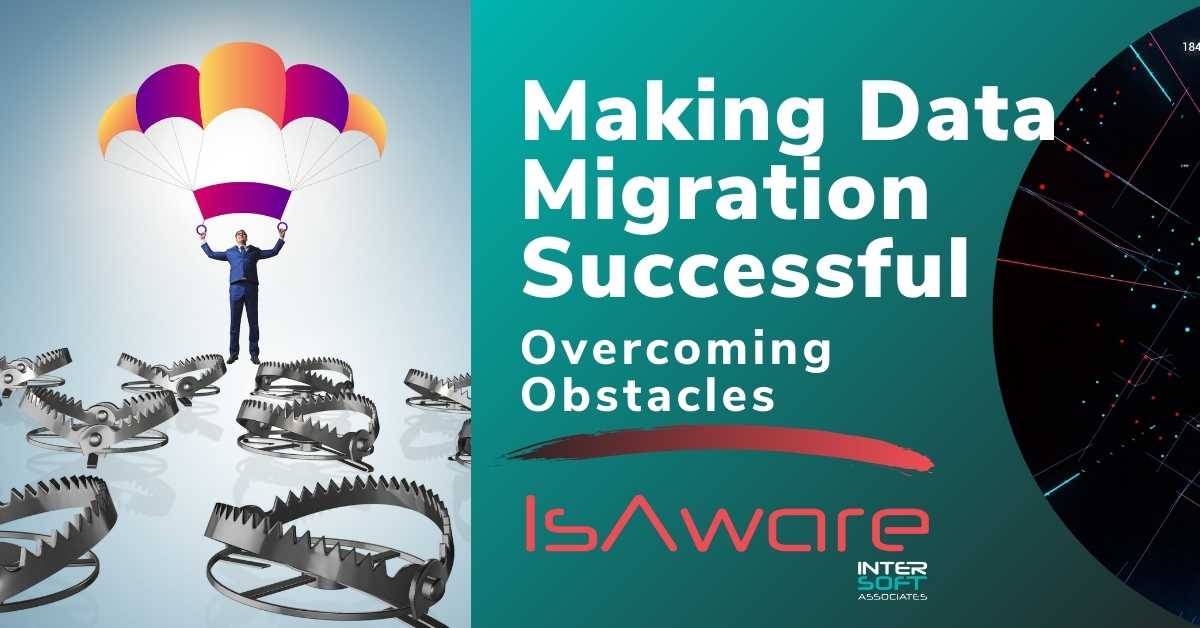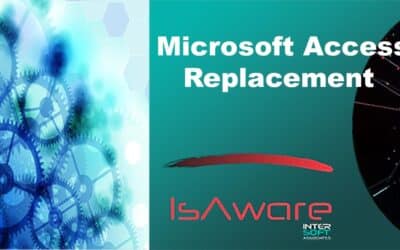Did you know that at least 83% of Data Migrations either fail, exceed their planned budget, or go beyond schedule?
Migration. It is a word that can send shivers down the spine of even the most experienced business owners. After all, Data Migration is no small thing; it can get complicated, time-consuming, and risky.
But moving your data to a new platform or software system does not have to be so complicated. By understanding the most common obstacles to successful Data Migration and proper planning, you can make the process as smooth, strategic and headache-free as possible.
Let us take a look at some of the common obstacles that come up during Data Migration projects and how to overcome them. Doing so will help you to form a better understanding of how to plan, start and execute a simple and successful Data Migration strategy.
What Is Data Migration and Why Is It Necessary?
Data Migration is the process of moving data from one database to another or from one system to a new platform or both. It is a necessary endeavor for a company that wants to upgrade its current capabilities in place or move to an entirely new system.
Database Migrations are most necessary when a firm updates its obsolete software. A Data Migration project may also include moving from an on-site structure to a cloud-based storage option to help with the optimization of their company. Both options are not mutually exclusive.
There are also specific programming languages and technologies used in software development that can influence the need for Migration, ASP and Visual Basic being two of them. They are two of the main languages supported by Visual Studio, a hub of programming tools used throughout the development stages.
Although support is still provided for ASP and Visual Basic, many organizations are transitioning to the new programming model, the .NET environment. Visual Basic is a classic interpreter-based type of language, while .NET is a compiled language. One of the many benefits of a compiled language is that the software will just operate faster with less waiting time for the user.
Another familiar use-case for Data Migration is the need to upgrade to new technologies. As companies grow and as technologies advance or as new platforms develop, Migrating data is increasingly just a part of modern business.
What Are the Data Migration Triggers?
To understand the common challenges that come with migrating data, it is important to first realize how Data Migrations get triggered in the first place. There are several different events and scenarios that can trigger a complete or partial move from one system to another, including:
- Mergers and acquisitions
- Legacy software modernization
- Data archiving
- Shifting to a centralized database
- Being introduced to an additional system
- The need to migrate to the cloud to expand your current storage capabilities more affordably
Understanding these triggers will help you develop better strategies for your own business. Each of these scenarios can lead to a need for a Data Migration initiative, and each presents its own unique set of challenges. For example, in the case of a merger or acquisition, you may need to combine two sets of data into one cohesive system.
Or if you are transitioning to the cloud, you may need to establish a set of proper and meaningful cloud KPIs, perform refactoring while mapping out what is currently available in your infrastructure so you can match those resources to your cloud provider.
Types of Data Migration
There are several different types of Data Migration that can be performed, each with its own set of challenges. The most common types of Data Migration are:
- Storage
- Database
- Application
- Cloud-based
- Business process
- Datacenter
There are also three types of Data Migration: cutover, staged, and parallel.
- Cutover Migration is the simplest type. All data will get moved to the new system at once. It can also be the riskiest, as there is no room for error.
- Staged Migration involves migrating data in manageable stages, which allows for a more controlled transition and makes it easier to troubleshoot any problems that may arise.
- Parallel Migration occurs when both the old and new systems are operating simultaneously. This option can be complex and time-consuming, but it does provide some benefits, such as allowing users to continue working while the Migration process is taking place and validating the Migration.
Potential Roadblocks During the Migration Process
Data Migration can also come with a few hurdles. But each hurdle is avoidable with proper planning.
Too Little Collaboration
Data Migration may take a large team or multiple people working on different things to successfully pull off the project.
Whether you have various internal employees or independent contractors, there is a chance that information and data will be crossed with others. This is especially true if you are using multiple tools and resources.
Alleviate potential misinformation, miscalculations, and reduced efficiency by collaborating with your team and all other departments that use or benefit from the data.
Use cross-functional tools to help everyone stay organized and together through different stages of the project, helping teams avoid confusion.
Size May Be a Hurdle
The first obstacle to a successful Data Migration is usually the sheer size of the data set. This can be especially daunting if you are migrating to a new platform or system that requires a different structure than your current one.
The best way to overcome this obstacle is by breaking your data set down into manageable and trackable components .This will make the Migration process less overwhelming and help you to stay on track.
Mismatched Data
Another common obstacle is often mismatched data formats between the old and new systems. This can cause problems during the Migration process, resulting in corrupted data or even lost information.
To avoid this, be sure to check the format of your data well in advance of the Migration process and confirm that it matches up with what the new system requires. A great way to do this is to create a data map between the old data structure and the new data structure. This process will help you create a proper roadmap.
Lack of Legacy Software Knowledge
If you are not familiar with the old system, it can be difficult to understand how your data is structured and where it needs to go.
This can lead to problems during the Migration process and a higher risk of data loss. To avoid this, take some time before beginning the Migration process to learn as much as possible about the old system. Contacting a professional like InterSoft Associates can help you through this process by, perhaps, reverse-engineering the old data.
This structured process will help you to map your data in an accurate way and ensure a successful Migration.
Miscalculation of Data Analysis
When processing large amounts of data, information can get categorized in different areas of a computer system, or more often, data is not categorized properly to begin with. This can result in inaccurate or incomplete data. If these issues go undiscovered it can lead to capturing outdated or incorrect information, potentially compromising the integrity of the entire dataset! This can also be the common problem of “two versions of the truth” where some values can exist in more than one field and they may not be the same. Work with an expert to help you resolve and scrub those duplicate values
Data analysis should be performed at the earliest possible point in the process. An analysis is usually conducted during the planning and strategy design phase and helps uncover any potential hidden errors with your data set.
Validation Inabilities
Even if you understand your source data, it will not always lead to durable specifications for migrating that data into a new target system. Early on in the Migration phase, any missed critical information could harm the operations of your project as it goes on. This is why continual validation and testing is necessary throughout the process.
Validating any transformation specifications at the start of the project with real data to support those specifications will help the process go more smoothly and easily. This is the better option in comparison to using possible or potential sets of data.
The Importance of Testing and Validating the Data Before It Is Moved
One of the most common obstacles to successful Data Migration is failing to test and validate the data before and as it gets moved. This omission can be a costly mistake due to potential issues such as invalid values, missing or incorrect fields, and formatting problems.
It may take more time initially, but validating your data before you move it will help ensure that you do not end up with corrupted, unusable or incorrect information in your new system once everything has been migrated.
One of the best ways to ensure easy Data Migration is by creating a data map and a test plan for each phase of the migration.
This is also known as a “data inventory.” This will outline every column and field in your current system, including the type of information it contains.
Data mapping in general is also a key component of data management.
Think about it this way: if your data is not mapped in the proper way, that same data can become corrupted, unusable and become a tremendous liability to the organization.
Make the Process Simpler
To ensure a user-friendly Data Migration process and project, working with a team of software developers and consultants can give you the most streamlined and reliable solution in the best time frame. Working with industry experts, like our team at InterSoft Associates, can alleviate the myriad of potential issues in data loss, invalid data, incorrect information or process confusion.
Although a Data Migration project can be simple to navigate with proper planning, it is often more helpful to have the process managed by a professional development team that focuses on a wide range of customized solutions. Whether augmenting your internal team or looking for an outside consultant, be sure to seek out a partner that understands the business strategy behind the Migration, as the experience to lead with confidence and is technically adept in managing a successful Data Migration.






